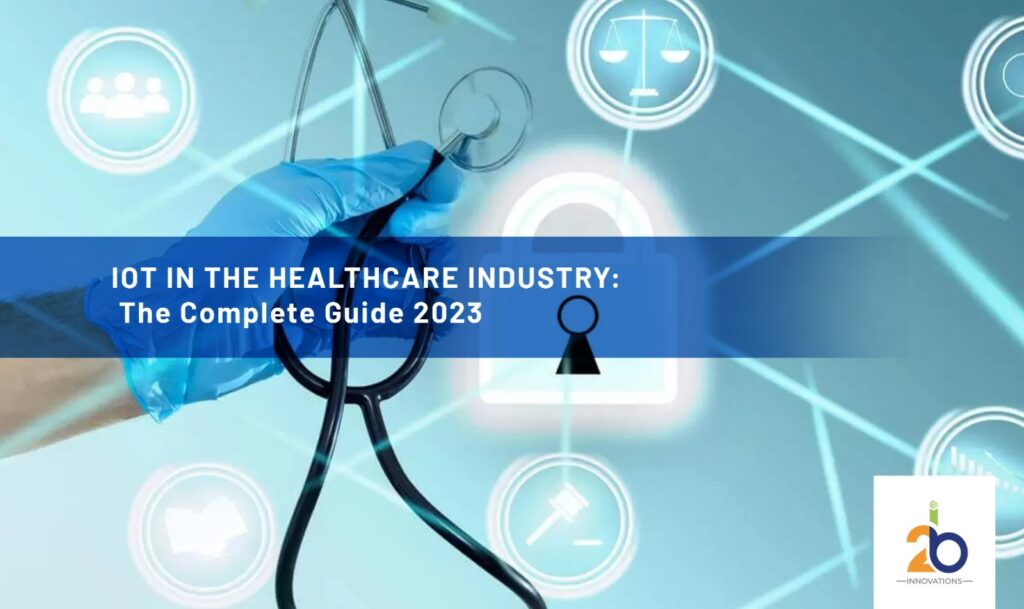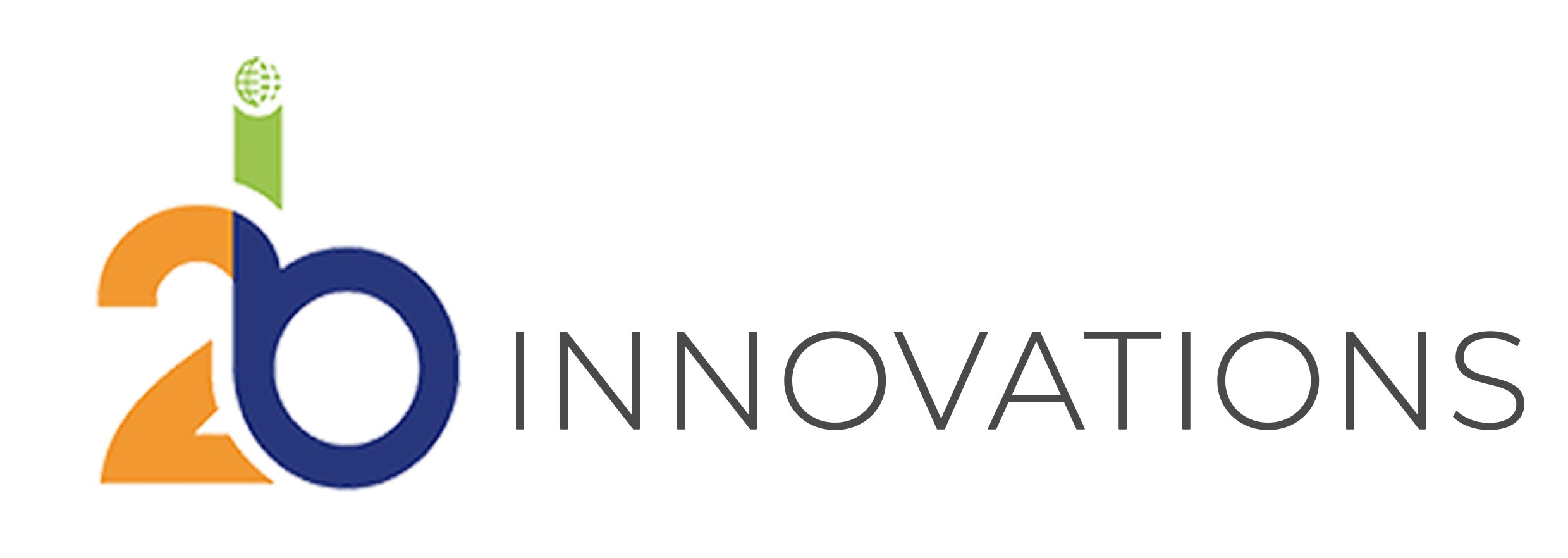
The Internet of Things (IoT) is a network of interrelated devices that seamlessly connect and exchange data with its peers, i.e., other IoT devices and the cloud. These devices are typically embedded with cutting-edge technologies like sensors and software, including digital and mechanical machines and consumer objects.
The world is evolving at a rapid pace. Every day, people become more technologically advanced. With the advent of IoT lately, a lot of organisations from all over the world have started using it to operate in an optimised manner, as IoT not only ensures efficiency but also enhances customer service, decision-making, and other benefits.
The healthcare industry is not left behind either. These technological advancements have caused noticeable growth across the healthcare sector. The healthcare IoT market is anticipated to surge from USD 127.7 billion in 2023 to USD 289.2 billion by 2028.
This article will not only answer the question, “What is healthcare IoT?”, but also share the advantages it has along with the challenges it is facing.
What is the Healthcare Internet of Things?
Now that you are aware of what IoT is, healthcare IoT is not so different. In simple words, healthcare devices integrate internet connectivity and/or sensor technology, which allows Healthcare Delivery Organizations (HDOs) to optimise their work by improving patient outcomes, enhancing operations, and allowing them to monitor remotely.
Healthcare IoT, or the Internet of Medical Things (IoMT), offers various features such as:
Remote Monitoring: Monitor the patient’s vital signs anytime, anywhere.
Data Collection: Incorporated into devices such as insulin pumps to collect data and transmit the same to healthcare professionals to optimise patients’ care.
Infrastructure Management: Allowing Healthcare Building Management systems (BMS) to monitor and control temperature, lighting, and more.
Improving Communications: Allowing patients to connect virtually with their healthcare providers anytime, anywhere.
Automating Tasks: Improves service quality and reduces the need for human intervention.
Healthcare IoT has revolutionised the industry, by allowing people to stay connected from wherever they are. While it has opened many gates for connectivity, it has also opened a couple of challenges, such as a gate for cybercriminals, who can breach through the connections and access data, causing issues such as safety, data privacy, and health information concerns.
Following this, you will delve deep into the challenges faced by the healthcare IoT and discover the steps to combat them.
Challenges Faced by the Healthcare Internet of Things
With the addition of every device, the healthcare industry is not only optimising its processes but also introducing additional cyber risk. Following are a few challenges faced by the industry with the advent of IoT:
Increase in the attack surface: As the number of connected devices grows, the information shared between the devices also grows. This amplifies the potential for hackers to breach the connection and steal confidential information by exploiting vulnerabilities.
Device Management: As the number of devices multiplies, organisations grapple with collecting and managing the data effectively from the network of devices. This complexity broadens the ecosystem, thereby suggesting the need for efficient strategies to streamline device management.
Corrupt Devices: Once a device is compromised, it acts as a gateway to infiltrate other connected devices, which will impact the entire network and its integrity.
Device Tracking: Keeping track of all devices is difficult as an unknown number of devices get connected to the system. This challenge leads to potential unauthorised access to the network, which can harm the system.
Incomplete Device Profiles: It is difficult to maintain an updated device profile. This increases cyber risk as device details and threats will be missed if the discovery tool is not used regularly.
In a world where technology evolves rapidly, the IoT landscape is evolving sideways, making it difficult to adapt to the pace, leading to the above-
mentioned challenges. As this cutting-edge technology paves the way for the industry to grow, vigilant adaptation and proactive measures are necessary to mitigate risk and fight these challenges to ensure the safety, privacy, and reliability of the data and systems.
Secure your Healthcare Internet of Things Devices
With the challenges mentioned above, the need to secure the devices is imperative. The question lies in how one can go about the same. But to answer that, one needs to start with a clear picture of what they need to secure first. The HDO’s cybersecurity journey should begin with comprehensive device inventory management. One can start their cybersecurity journey with Medigate by Claroty, which helps with the challenges in the following ways:
Complete visibility of connected devices: Having eyes on all your connected devices is the first step to cyber security. If you don’t have eyes on it, you won’t be able to monitor and protect it from cyber risk. Right from medical devices to IoT devices, one should have eyes on all, ensuring that there is no blind spot for the hacker to enter from. Medigate by Claroty combines passive and light active collection techniques, compatible with over 500 communication protocols, to enable HDOs to not only have eyes on all devices but also understand the dynamics, their traffic, connections, and communication in the network.
Integrating the IT tech stack and workflows: After getting an understanding of all the devices connected to the network, you might find loopholes in governance across IT workflows. The solution to this is to extend your existing tools and workflows from IT to OT. Medigate offers you the flexibility to unify your data.
Extend the security to the clinical environment: Once this newfound unified visibility is connected with your tech stack, the same can be extended to IT security controls across clinical and non-clinical workflows to ensure zero blindspots and potentially vulnerable points for hackers. Extending the security will allow you to unify security governance and help you secure your Healthcare IoT Devices.
Conclusion
Healthcare IoT connects billions of devices. It has billions of data points, which are difficult to track and monitor, which leads to the potential for the network to get hacked and misused. Securing the data is of utmost importance. IoT security and privacy are cited as major concerns that should be addressed before it is too late.
As these devices are closely connected, the hacker can exploit just one blind spot and manipulate the data. The manipulation will not only disrupt the connection and processes but also lead to the leak of important personal data such as names, addresses, and more.
Medical device cybersecurity is critical for every healthcare organisation. Understanding all the healthcare IoT devices, their location, their connection, and their attributes is essential to fostering a solid healthcare cybersecurity strategy and ensuring efficient operations of the devices and processes. While we are adapting to the latest technologies to optimise our operations, we also prioritise their protection.
To align you with security, Claroty, and its products will help you access tools to solve the challenges faced by you and ensure complete protection of your healthcare IoT from all the emerging cyber threats.
Introduction through a Vulnerable Citrix Application
The ransomware infiltrated the hospital’s network via a well-known vulnerability in a Citrix application, even though the hospital claimed to have patched this vulnerability. Despite their efforts, the ransomware managed to compromise 30 servers, leading to disruptive consequences.
Disruption of Critical Healthcare Services
The attack resulted in a distressing situation where planned treatments, outpatient care, and emergency services had to be halted. Patients in need of immediate medical attention were redirected to alternative hospitals, causing severe delays in care. Tragically, one patient’s life was lost due to the diversion of an ambulance to a hospital farther away.
Primary Cybersecurity Menace in Healthcare: Phishing
Phishing reigns as the predominant cybersecurity peril within healthcare. It involves embedding harmful links in deceptively benign emails. Email phishing stands as the most prevalent form. These deceptive messages often exploit well-known medical issues to coax recipients into clicking links.
Consider this instance of a phishing email masquerading as communication from the World Health Organization.
Clicking a link in a fraudulent email directs users to a fake webpage resembling a familiar internal software login screen. Submitting credentials grants cybercriminals immediate entry to healthcare systems.
Ensuring Patient Safety and Device Protection
The incident at Düsseldorf University Hospital serves as a poignant reminder of the necessity for comprehensive healthcare cybersecurity. Implementing effective cybersecurity measures becomes imperative not only to safeguard critical infrastructure but also to protect patient well-being and the integrity of medical devices.
Healthcare’s Disproportionate Data Breach Challenge
In the healthcare sector, data breaches occur at a notably higher rate compared to other industries. In 2020, an average of 1.76 data breaches took place daily within healthcare.
Stringent guidelines like HIPAA aim to safeguard health records, but enforcing its security measures often poses difficulties for healthcare entities. Despite efforts, cyber attackers exploit these gaps, jeopardizing patient data security even under frameworks like HIPAA.
Explore the efficacy of robust healthcare attack surface management tools, which not only identify vulnerabilities but also enhance existing security endeavors, extending value from allocated budgets.
Best Practices To Tackle Cyber Threats
Presenting our concise guide to contemporary cybersecurity principles and effective practices for safeguarding your organization against cyber threats in 2023:
Establish a Strong Cybersecurity Policy
Craft a comprehensive cybersecurity policy to systematically enhance your company’s digital defense. This policy fosters unity among security experts and staff by outlining essential, organization-wide information security procedures.
Opt for a tiered approach with a central policy supplemented by department-specific ones. This tailored approach accommodates distinct department requirements, heightening policy impact while minimizing operational interruptions.
Securing Network Boundaries and IoT Connections
Modern organizational perimeters have expanded beyond conventional firewalls and DMZs due to the influence of remote work, cloud environments, and IoT devices.
The IoT market, predicted to grow to approximately $567 billion by 2027 from its 2021 value of about $384 billion, highlights the significance of this trend.
Internet-connected devices, including security cameras, smart door locks, and office equipment, introduce potential vulnerabilities. For instance, a compromised printer could grant unauthorized access to sensitive documents.
Strengthening your perimeter involves safeguarding border routers, establishing controlled subnets, and segregating sensitive data from the primary network. Employing a zero-trust approach alongside traditional security measures like firewalls and VPNs ensures continuous validation of users and devices, a concept rooted in “never trust, always verify” to thwart unauthorized access.
Effective Password Management
Employee credentials serve as direct gateways for cybercriminals to access sensitive data and valuable business information. Tactics like brute force attacks and social engineering can compromise these credentials discreetly.
Many organizations rely on dedicated password management tools to thwart such threats. These solutions empower you to control employee credentials, mitigating the risk of unauthorized account access.
Prioritize password management tools offering passwordless authentication, one-time passwords, and robust encryption. If entrusting employees with their password management, consider reinforcing your cybersecurity policy with these recommendations:
Employ distinct passwords for each account.
Maintain separate accounts for personal and business use.
Craft lengthy passwords incorporating symbols, numbers, and capitals.
Leverage memory aids like mnemonics for lengthy passwords.
Utilize password managers and generators.
Never share credentials with colleagues.
Rotate passwords at least every three months.
Elevate Your Data Security and Handling
The manner in which you oversee your business data significantly impacts both your organization’s confidentiality and security. Commence by drafting a comprehensive data management policy, outlining the processes of data collection, processing, storage, authorized access, storage locations, and deletion timelines.
Equally imperative is the creation of a data protection policy to define your safeguarding strategies. Align these measures with the core tenets of information security:
Confidentiality: Prevent unauthorized access to information.
Integrity: Ensure data remains unaltered throughout its lifecycle.
Availability: Guarantee authorized users have continual access to necessary data.
Final Takeaway
n the face of evolving threats, cybersecurity becomes a non-negotiable commitment. By adopting advanced strategies and safeguarding data, devices, and knowledge, we shield our businesses from ceaseless cyber risks. This proactive approach not only ensures our success but also safeguards the invaluable data we manage.



